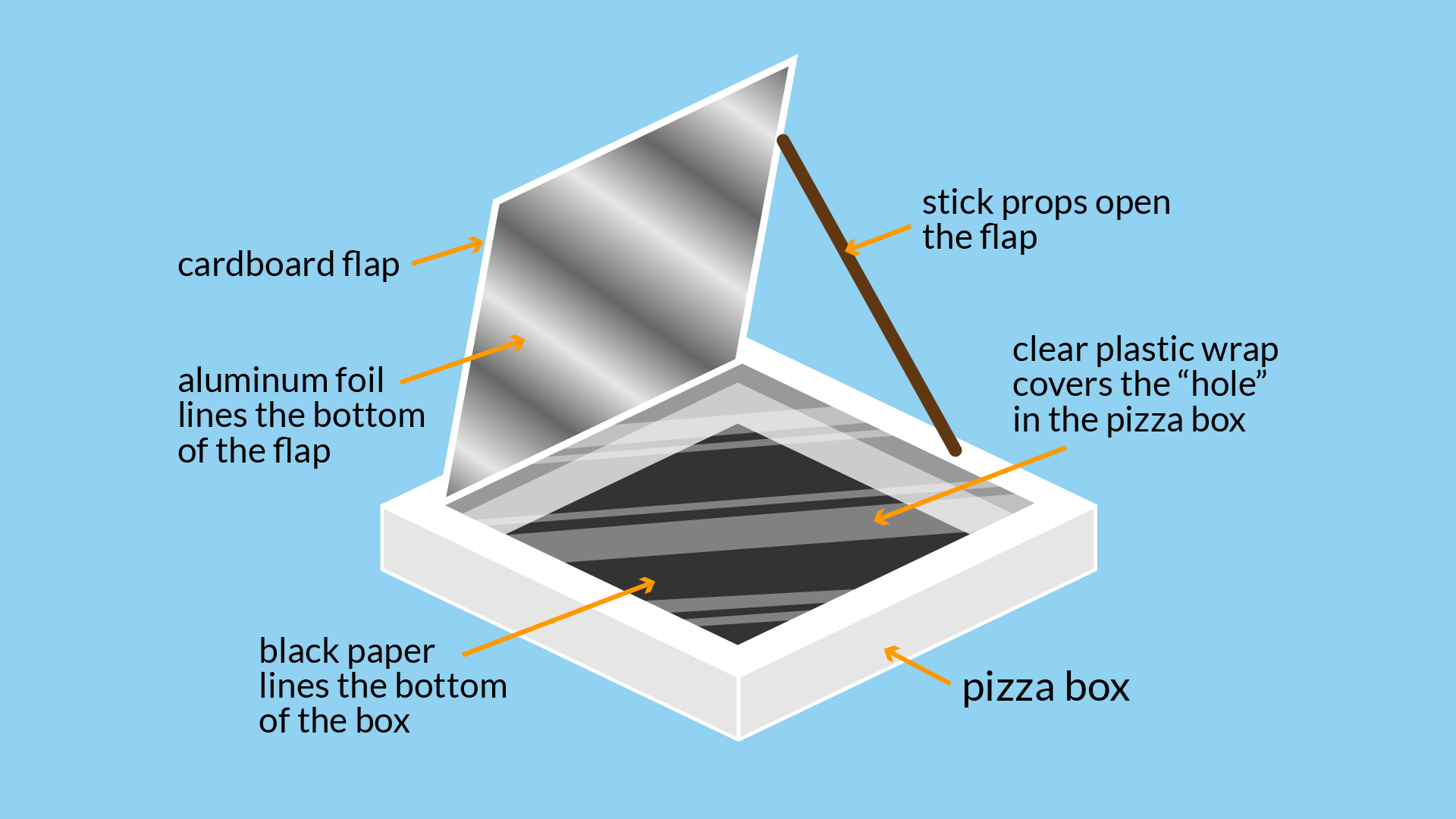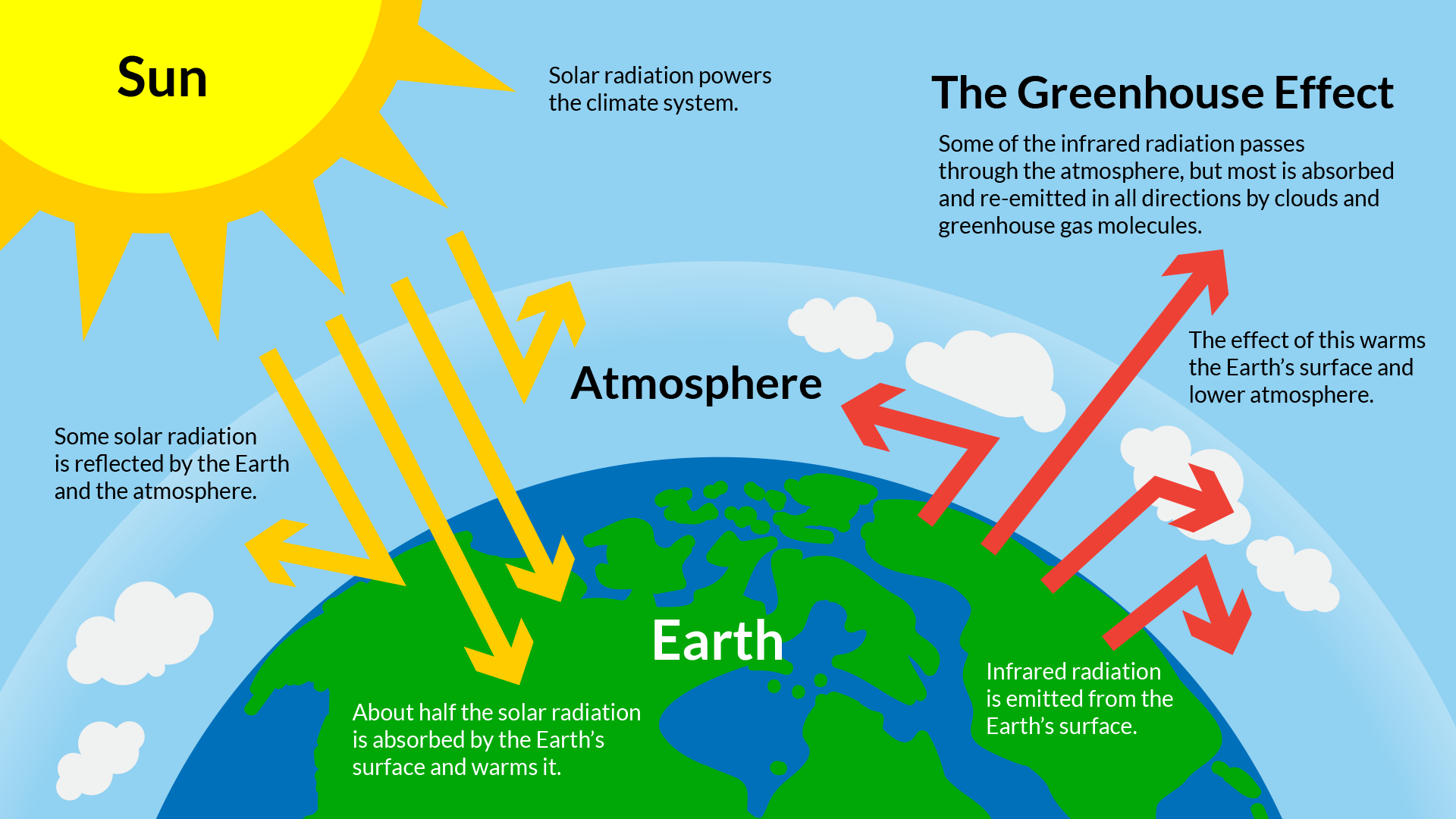Solar Oven S’mores
- Challenging
- A Little Messy
- 60 Minutes
- Outdoor
Harness the sun's energy!
Transform a pizza box into a solar oven to make a s'more (melted chocolate and marshmallow between two graham crackers). Try it! It’s fun AND delicious!
Watch the video on YouTube: https://youtu.be/FU6HYc00P_4
You Will Need
Pizza Box
Aluminum Foil
Black Paper
Clear Plastic Wrap
2 Wooden Skewers
Glue
Tape
Exacto Knife or Scissors (both require adult supervision)
Graham Crackers*
Marshmallows*
Chocolate*
A Sunny Day!
**Note: This experiment can be done with other types of food - try making nachos with tortilla chips and shredded cheese, or english muffin pizzas. If experimenting with a group of children, ask parents about any potential food allergies when choosing foods.
Directions
- Ask student to create a testable question (a hypothesis). Example: Will it take longer than 10 minutes to cook the s'mores?
- Cut a three sided flap on the top of the pizza box (1-2” from all sides)
- Spread glue on the inside of the flap and cover with aluminum foil
- Lay black paper on the bottom of the box
- Tape layers of clear plastic across the opening that you cut in the lid.
- Place a graham cracker, chocolate bar, and marshmallow inside the oven and close the lid with the flap propped open with wooden skewers
- Aim your oven at the sun and check in every few minutes to check progress. Is the chocolate melting?

Discovery Questions
Beginning the experiment
- Where does most of the energy on our planet come from?
- What is the purpose of the aluminum foil?
- Why did we use black paper and not a different color?
- Why do we need the plastic wrap?
During the Experiment
- How does the angle of the “flap” of the solar cooker affect the cooker temperature?
- How can you make it cook faster?
- Do you think it would take the same amount of time to melt four s'mores as it does to simply melt one?
- Is the evidence and data you are collecting helping you test your hypothesis question?
After the Experiment
(We gave general answers to these, but some answers could vary based on how your experiment goes.)
- What provided the heat to melt the s'mores?
- How do you think it would work on an overcast day?
- Which factors impacted the solar oven the most?
- If you could start over, what might you do differently?
How it works
Solar ovens use solar energy—light and heat from the sun—to cook food. The oven is designed to absorb more heat than it releases. Rays of sunlight come to the earth at an angle. The foil reflects the ray, and bounces it into the opening of the box. Once it has gone through the plastic wrap, it heats up the air that is trapped inside. The black paper absorbs the heat at the bottom of the oven, and the plastic wrap helps the heat stay inside the box to cook the food.

The concept behind creating the solar oven is similar to the concept of the Earth's greenhouse effect. The greenhouse effect is a warming of the Earth's surface and the air above it. It is caused by gases in the air that trap energy from the sun. These heat-trapping gases are called greenhouse gases. The most common greenhouse gases are water vapor, carbon dioxide, and methane. These gases create a blanket-like effect, like the plastic wrap in your solar oven, that traps the sun’s heat. Without the greenhouse effect, Earth would be too cold for life to exist.
Key Words
- Solar Radiation
- Light energy from the sun in the form of electromagnetic waves, including visible and ultraviolet light and infrared radiation.
- Nuclear Reactor
- An apparatus or structure in which atomic material can be made to undergo a controlled, self-sustaining nuclear reaction with the consequent release of energy.
- Infrared Radiation
- A type of electromagnetic radiation; often referred to as heat rays. Infrared radiation is electromagnetic radiation of a wavelength longer than visible light but shorter than microwave radiation.
- Direct Sunlight
- Sun rays which have reached an object without obstruction.
- Indirect Sunlight
- Sun rays reaching an object with an obstruction creating a barrier between the rays and the object.
- Greenhouse Effect
- The greenhouse effect is a warming of Earth's surface and the air above it. It is caused by gases in the air that trap energy from the sun. These heat-trapping gases are called greenhouse gases. The most common greenhouse gases are water vapor, carbon dioxide, and methane. Without the greenhouse effect, Earth would be too cold for life to exist.
- Insulation
- Insulating materials reduce the flow of heat or electricity. Thermal insulation decreases the flow of heat from a hot region to a cooler one.
